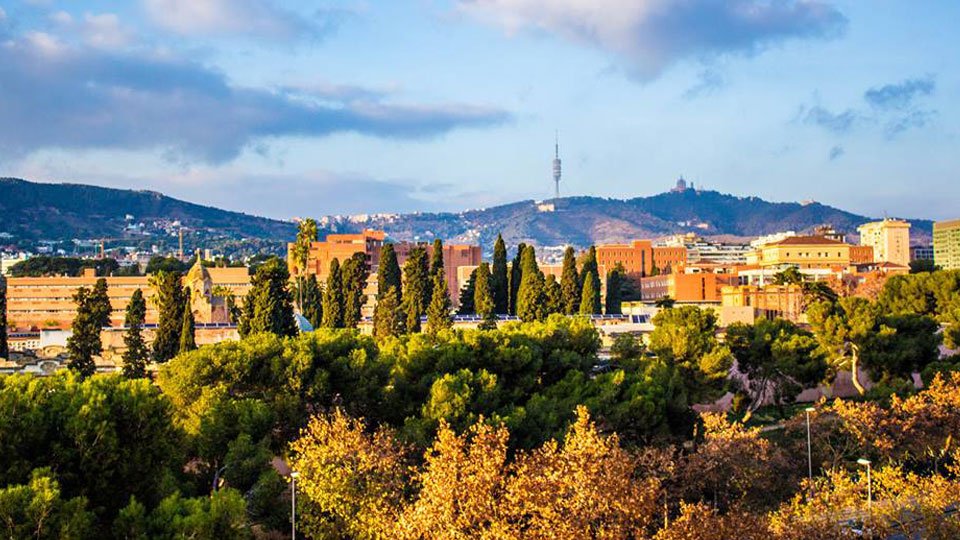By Ayan Das
Pic Courtesy : Dr. Debraj Roy
Destination Barcelona, mainly known for its art and architecture, is the cosmopolitan capital of Spain’s Catalonia region and the second most populous municipality.
The city’s rich cultural life portrays the Egyptian mummies and contemporary works of art, the reconstruction of a mangrove swamp and garments, which defined the history of fashion. Barcelona is the appropriate selection than ever for the 1992 Olympic Games and it’s still in peak condition. These can be seen in international competitions which attract millions of people every year and many facilities for football, golf, swimming, cycling and various other kinds of sports.
Leisure and fun-filled Barcelona offers entertainment for kids and adults alike, adventure lovers and people in search of peace. The best thing is to try and fit them all in one and that’s what exists in the destination.
In Barcelona, one doesn’t have to choose between shopping and sightseeing, as shops are part of the city life. While discover unforgettable sights, one will be welcomed by the leading international brands, modern designers and traditional shops that have been there since time immemorial. Barcelona never sleeps. The city has set the benchmark for the international electronic music scene and dances to the sounds of the world’s top DJs. It proves to be the perfect place for jazz, rock, Latin rhythms and pop lovers.
The destination is also considered as the ‘City of Marvels’ as there are lot of mesmerizing places to visit. The best time to visit preferably is July and August with bit hot and humid climate, but majorly travellers visit early pleasant and mild summer (May-June) and fall (September-October).
One of the major top 10 places to visit in Barcelona is La Rambla, the most popular street that stretches to 1.2 kilometres (0.75 mi) connecting Plaça de Catalunya in the centre with the Christopher Columbus Monument at Port Vell. La Rambla forms the frontier between the quarters of Barri Gòtic, to the east, and El Raval, to the west. The market opens the Rambla and is one of the city’s primary tourist landmarks, lodging a very diverse selection of goods.
The Cathedral of the Holy Cross and Saint Eulalia also known as Barcelona Cathedral is the Gothic cathedral and seat of the Archbishop of Barcelona. The roof is noteworthy for its gargoyles, faceting a wide range of animals, both domestic and mythical. The cloister currently contains a gift shop, the customary candles normally lit at the shrines of saints have been reinstated with electronic candles and cellular phones have been forbidden from the Chapel of Lepanto.
The Basilica i Temple Expiatori de la Sagrada Família is a huge unfinished Roman Catholic Church in Barcelona, designed
by Catalan architect Antoni Gaudí. Mutually with six other Gaudí buildings in Barcelona, part of la Sagrada Família is a UNESCO World Heritage Site, as testifying “to Gaudí’s exceptional creative contribution to the development of architecture and building technology”, that were applicable to the development of modern construction in the 20th century”.
Plaça Reial (Royal Square) is a vocation of draughtsman Daniel Molina, a much stopover place, always full of tourists and bystanders. After visiting the Royal Square, one can continue walking along La Rambla and the Plaza Sant Jaume or down to the Columbus monument and walk in close proximity to the sea.
Magic Fountain Show of Montjuïc activates on 3620 water jets circulating 2600 litres of water every second in the 3.1 million litre pool. It throws in 4760 lights and a water spout of at most 52 m. The site where the Magic Fountain was constructed was the previous destination of The Four Columns.
Picasso Museum is located in a Gothic-building which makes the museum even more enchanting. It can be often seen with very long lines which are worth the price of admittance.
Camp Nou Stadium is the home stadium of FC Barcelona since 1957. It is situated approximately 680 metres from Camp Nou where there is the Trambaix Avinguda de Xile station. It is the largest stadium in Spain and Europe with a capacity of 99,354 seats and is considered as the third largest stadium in the world in terms of its capacity.
Barrio Gotico often referred to as Gothic Quarter has a charming ambience with narrow medieval streets with trendy bars, clubs and restaurants. The Gothic Quarter is one of three neighbourhoods in the Ciutat Vella, Barcelona’s Old Town.
Montjuic Hill is a broad trivial hill with a relatively flat top excusing the harbour, to the southwest of the city’s centre. The eastern side of the hill is almost a steep cliff. The top of the hill with a height of 184.8 metres was the site of several buttresses, the latest of which, the Castle of Montjuïc remains today.
Tibidabo standing at an altitude of 512 metres is the tallest mountain in the Serra de Collserola.












